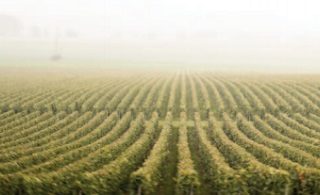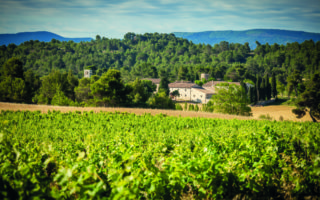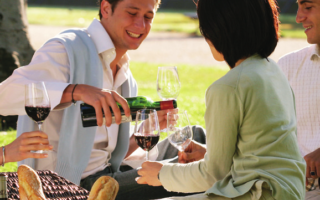Beaujolais wine in the Saone et Loire

Burgundy wine or Beaujolais wine?
Did you know that certain Grand Cru Beaujolais wines are actually grown, harvested and produced in Burgundy? The transition between the Maçonnais area and Beaujolais is difficult to decipher, La Chapelle-de Guinchay for example where Chénas, Saint-Amour, and Moulin-à-Vent Grand Crus Beaujolais are harvested, is geographically situated in the region of Maçon!
Beaujolais covers an area, that is the equivalent of Maçon but its vineyards are far more consequential, almost 16,000 hectares of vineyards in fact! The granite geological structure of the Beaujolais in the north is particularly suited to the production of Gamay grapes and is at the origin of 10 Grand Cru wines. 50% of all the wine produced is reserved for the Beaujolais Nouveau appellation and 50% of all Beaujolais Nouveau is exported to Japan, the USA, GB and Switzerland.
Saint-Amour
This northern most wine appellation is the victim of its own success and name! It is highly popular just around the 14th of February and sales obviously slacken off afterwards! It is a light and simple wine that is easy to drink and is of course, ideal for lovers…
Juliénas
Named after Julius Cesar, this Beaujolais grows on a clay rich soil and as such is a more robust wine.
Chénas
This wine is produced in an ancient oak forest hence the name Chénas, Chêne in French means oak tree. Wines here tend to be a little austere and firm as a result of the old oak forest but are in the process of developing.
Moulin à Vent
This is the most noble appellation in Beaujolais, producing a pleasant and generous wine. It was the first wine growing area to obtain its appellation in 1924.
Fleurie
This wine, according to the locals is the most feminine of all the Beaujolais wines. There are 2 different types of wine growing areas, one with a granite soil producing strong and powerful wines, and the second area with sandy soils thus giving a more delicate wine.
Chiroubles
These grapes grow at an altitude of 750m and as such are subjected to cool nights and late harvests. Wine here is ‘airy’ and fruity.
Morgon
Wine grown on the ‘Montagne de Py’ is probably the best and most ‘concentrated’ Morgon wine to drink. Wines from this area in general are ‘virile’ and have strength because of the soils that are rich in iron oxide giving charm and strength.
Régnie
This appellation was awarded in 1988. Wines grown close to Brouilly are light whilst wines grown close to Morgon have strength.
Brouilly
This ancient volcano produces two different types of wine according to where the grape is grown. When grown on pink granite soils the wine is very fruity whilst in other areas it gives a more ‘solid’ and stronger wine.
Côtes de Brouilly
This is the oldest vineyard in the Beaujolais. The vines grow on the old volcano that contains blue granite stone, this brings elegance to the wine.
Côteaux de Lyonnais
This appellation was awarded in 1984 and is the wine ‘par excellence’ to drink with friends on happy, simple occassions. It is a light, fruity and refreshing wine that’s easy to drink.
• Jacquie Boulton-Bridoux with special thanks to Marc Regaine
Share to: Facebook Twitter LinkedIn Email
More in burgundy, courses, loire, vineyards, wine
By FrenchEntrée
Leave a reply
Your email address will not be published. Required fields are marked *



